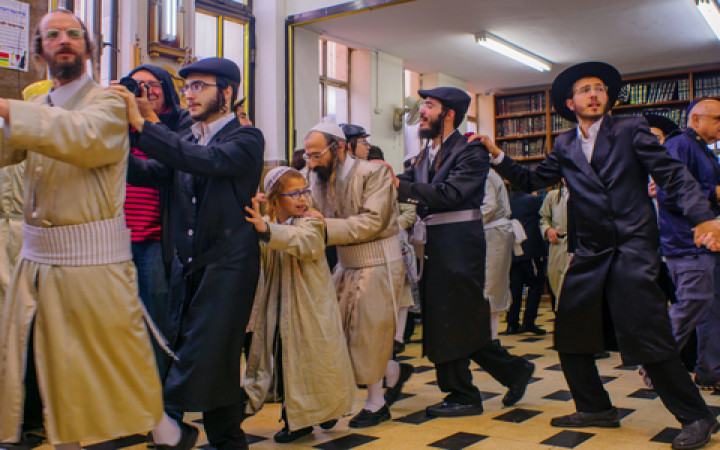Today’s Wonder of the Day was inspired by Kimora from NC. Kimora Wonders, “Why do people dance?” Thanks for WONDERing with us, Kimora!
Do you like to dance? Maybe you dance hip-hop, tap, or ballet—maybe modern, ballroom, or Latin dancing. Or maybe you like to make up your own dances! There are many kinds of dance to pick from. There are also different dances from all over the world. Dancing can be a way for us to celebrate, or even a way to practice our religion.
You may be WONDERing how dance could be a part of religion. Let’s learn about Jewish dance! Jewish dances come from all over the world and have many styles. They are used to celebrate special occasions, like weddings. They are also an important part of religious holidays. For some, dancing is a way of praying.
Dancing is an ancient part of the Jewish religion. It is mentioned several times in the Torah. For example, dancers would celebrate when soldiers returned. Dancing was also a way to enjoy holidays and special occasions. In the 1800s, a sect of Judaism called Hasidic Jews began using dance as an even bigger part of their religious practice. In fact, they view dance as a central part of prayer.
Jewish dance isn’t only religious, though. Jewish dancing can also have cultural meaning. For example, dancing at weddings is a very old Jewish religious tradition. It is expected that everyone dances to celebrate and honor the newly married couple. Over a long time, this tradition has become part of Jewish culture. Many Jewish couples, whether they are observant or not, enjoy traditional wedding dances. In one of the most popular dances, the bride and groom sit in chairs while they are lifted above their dancing wedding guests.
Another famous Jewish dance, often seen at weddings and other celebrations, is the hora, or horah. Originating in Europe, the hora moved to Israel along with Jewish immigrants. It is often danced to a song called “Hava Nagilah.” The hora is a group dance. A circle or line of dancers hold arms or hands and move their feet to left and right in a pattern of running steps and jumps.
Dances like the hora came about as Jewish people from many places immigrated to Israel. Throughout the 1900s, immigrants shared their different music and dance traditions. Some of these became Israeli folk dances. There are influences from Eastern Europe, North Africa, and the Middle East.
Of course, there are also the original dances that became part of Israeli folk dance. You can still dance to klezmer music that originated in 1600s Europe. You can learn the Yemenite step, from the Middle East country of Yemen. You can see the Hasidic circle dances, too. Which would YOU like to learn?
Does this WONDER get your toe tapping? Get your dancing shoes on and try out some of the types of Jewish dance!
Standards: CCRA.R.1, CCRA.R.10, CCRA.L.3, CCRA.L.4, CCRA.L.5, CCRA.L.6, CCRA.W.4, CCRA.W.5, NPES.1, NPES.2, NPES.5, C3.D2.Geo.2, C3.D2.His.1, C3.D2.His.3




